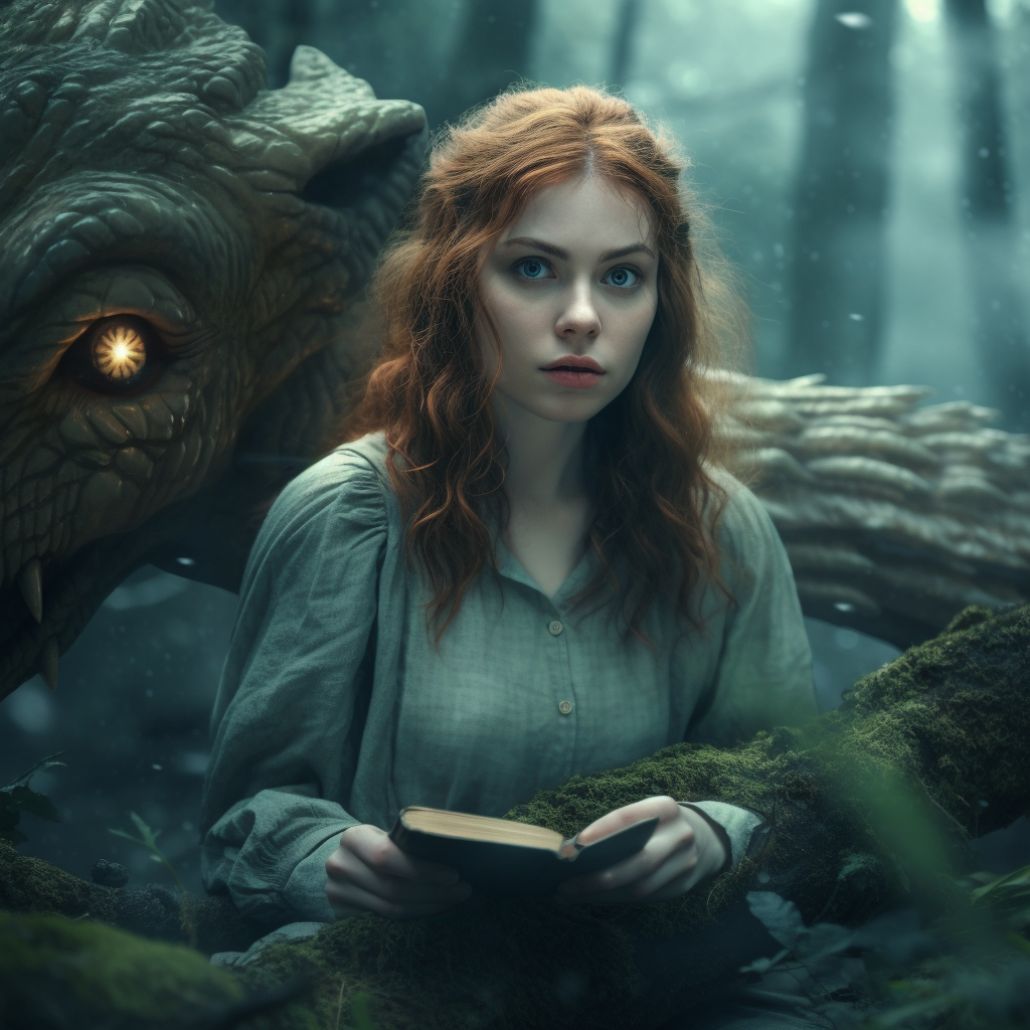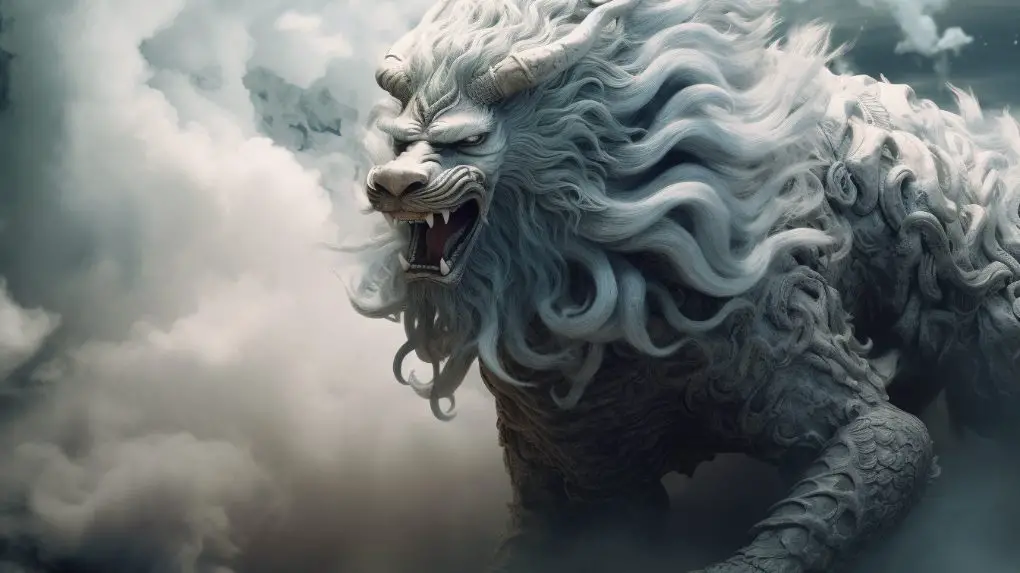If you’ve ever plunged into the fascinating realm of Chinese mythology, you’ve likely encountered the Qilin, an extraordinary mythical creature revered for its kindness and perceived as a bringer of prosperity and serenity.
Often dubbed the “Chinese unicorn,” the Qilin is, however, far more intricate than the unicorns of Western narratives.
Introduction to the Qilin
The Qilin, pronounced “chee-lin,” is a chimeric beast embodying various animals. While many assert its appearance resembles a large female deer, others spot the scales akin to a Chinese dragon.
But, don’t be fooled; it’s not just a fanciful mix of creatures. The Qilin comes with its own set of lore and significance, deeply rooted in the rich tapestry of Chinese mythology and symbolism.
Though originating in China, the Qilin’s influence isn’t limited to its birthplace. The mythical creature meandered its way through various East Asian cultures, including Japan, where it’s known as “Kirin.”
Despite the regional nuances, the core essence of the Qilin as a harbinger of positivity remains the same generic meaning across these cultures.
Also read Exploring the Fascinating World of Ghosts in Literature
Delving into Chinese Mythology
Qilin: The Chinese Unicorn
What sets the Qilin apart in the vast menagerie of mythical creatures is its unique moral compass. It’s gentle, treading carefully to prevent even the grass underfoot from harm. Its kindness extends to all living things, echoing the principles upheld by illustrious rulers and sages of Chinese history.
The Qilin isn’t all about gentleness, though; it’s also a symbol of justice, an avenger of sorts for the pure-hearted. When the innocent are wronged, legends say, the Qilin emerges from its heavenly abode, bringing forth retribution, embodying the divine balance of yin and yang, making it a favorite among the gods and an auspicious sign for mortals.
The Historical Journey of the Qilin
Early References and the Qing Dynasty
The Qilin’s history is as textured as its composite body. Inscribed jade tablets dating back to the formidable reigns during the Qing Dynasty (1636-1912) depict this legendary creature, signifying its long-standing prominence in royal iconography and folklore.
The Ming Dynasty and the Qilin’s Evolution
Rewind a few centuries to the Ming Dynasty (1368-1644), and you’ll find the Qilin assuming a different role. It was seen as a guardian of the royal household, a powerful creature capable of fending off malevolent forces. Artifacts from this era feature the Qilin as a steadfast protector, highlighting its dual nature as both nurturer and warrior.
Anatomy of a Mythical Beast
A Mosaic of Animals: From Deer to Dragon
Embarking on the task of describing a Qilin’s appearance is like trying to paint a cloud—every depiction is both accurate and fanciful.
With hooves like a deer, scales resembling those of a dragon, and an ox’s tail, the Qilin is an artist’s paradox. Its head is often lion-like, but it’s not uncommon to find renditions with a more dragon-esque or even giraffe-like aspect, paying homage to its mythical nature.
Understanding the Qilin Figure
One of the most defining features is its single horn, contributing to its title as the “Chinese unicorn.” However, unlike the Western unicorn, the Qilin’s horn is often depicted as more deer-like—less for warfare and more a crown of grace. And then, there are the flames—often illustrated around its shoulders, signifying its divine origin.
The Qilin’s Role in Art and Legends
The Qilin in Bronze and Jade
From grand statues guarding temple gates to the intricate carvings on an inscribed jade tablet, the Qilin has been a favorite subject in Chinese art. Bronze representations, often used in rituals, capture its majestic stature, while jade carvings are common in amulets, symbolizing protection and good fortune.
The Qilin and the Great Sage
One of the most famous legends recounts the Qilin appearing to the pregnant mother of Confucius, the great sage. This mythical creature presented her with a jade book, foretelling the incomparable wisdom of her unborn child. The event bore testimony to the Qilin’s role as a herald of illustrious individuals destined for greatness.
Related: Mythical Creatures: Examining the Legends of Chimera and Griffin
Legendary Encounters with the Qilin
Throughout the annals of Chinese history, there have been whispered accounts of times when the Qilin appeared, moments that marked profound shifts in dynasties and the emergence of illustrious rulers.
The Qilin Predicting Future Greatness
One such tale harkens back to a time of great unrest within the kingdom. The story goes that a Qilin, the chi lin with its resplendent one horn, emerged from the imperial gardens’ shadows, before a young prince destined to become one of the most benevolent rulers in history.
The Qilin, silent and majestic, bore an inscribed scroll in its mouth, predicting the prince’s future greatness. This moment, witnessed by the royal court’s sages, was one where events bore testimony to the mythical creature’s divine providence.
The Royal Beast Amongst Men
It wasn’t just the gentle deer-like creature that graced these imperial grounds. Legends speak of a Qilin with a tiger’s body, the horse’s hooves, and the dragons’ scales.
This composite animal, a spectacle of awe and reverence, was a sign of heavenly endorsement for the ruler, asserting his mandate from the celestial realms.
Symbolism and Interpretation in Various Cultures
The Japanese Kirin
In Japan, the creature is known as Kirin, akin to its Chinese counterpart but holding unique cultural nuances. Often depicted more akin to a dragon than a deer, the Kirin’s appearance in Japan symbolizes divine punishment for the wicked, an attribute aligning with the Qilin’s embodiment of retributive justice.
Other Cultural Interpretations
Across East Asia, variations of the Qilin continue to symbolize prosperity, serenity, and justice. In some traditions, they are less fearsome, more akin to gentle spirits of the earth and woodlands, safeguarding the innocent and bringing harmony to the natural world.
The Qilin in the Natural World
In ancient texts, scholars detailed the Qilin’s mystical relationship with the natural world, describing it as an animal of peace, a friend of the ox, and a guardian to all creatures meek and bold.
A Tapestry of Mythical Elements
Though considered a creature of fire, the Qilin encompassed elements of various revered beasts. From the assertive form of a tiger to the regal stance of a king among birds, it was said to combine the phoenix’s grace, the tortoise’s wisdom, and the unwavering strength of a male dragon.
All these facets painted a picture of a creature not bound by the natural laws, one that transcended simple categorization.
The Qilin’s Omens: Life and Death
One of the most poignant roles of the Qilin was its association with the cycle of life and death.
The creature was known to appear not only during the birth of kings but also in the quiet, mourning moments following an esteemed leader’s death. Its presence comforted the grieving, assuring them of the balance in the universe.
Auspicious Events and the Qilin
Births, Throne Ascensions, and More
The Qilin is known to appear during landmark events, ushering in eras of prosperity. From the birth of noble hearts to the crowning of righteous rulers, their presence turns any occasion into a herald of peace and goodness for all.
The Qilin as an Omen of Greatness
The birth of Confucius isn’t the only momentous event graced by the Qilin. Throughout history, tales recount sightings of this mythical creature preceding monumental epochs, often followed by flourishing civilizations and benevolent leadership, cementing the Qilin’s status as a beacon of auspicious beginnings.
Sacred Symbolism in Cultural Artifacts
The Qilin wasn’t merely a legend told around fires; it was a significant cultural symbol, its form adorned many artifacts, from royal garb to the walls of sacred temples.
Creatures Carved in Silence
In temples, the Qilin stood still and noble amongst other mythical beings, its single horn often depicted amidst other creatures’ horns, asserting its uniqueness and unity with the divine. These silent stone beings watched over babies, blessed new harvests, and guarded the secrets of the sages.
When the Qilin Appeared in Dreams
In the realm of dreams, the Qilin took on a different role. It was said that seeing the Qilin in one’s sleep was a potent omen of good fortune, a sign that the dreamer was touched by the divine.
These nighttime visions were often painted, the artists attempting to capture the ephemeral beauty of a creature that dwelled between reality and myth.
You may also like The Ziz: The Mythical Creature of Jewish Folklore
The Qilin’s Mystical Associations
Connection to the Spiritual and the Divine
The Qilin’s esteemed place in Chinese mythology is deeply tied to its spiritual connections. Seen as a celestial being that draws the pure essence of the earth and sky, it’s believed to live for a thousand years, appearing only during the reign of a benevolent and sincere leader.
It’s not just a mythical creature; it’s a celestial ambassador, a link between the divine and the earthly realms.
The Qilin and Natural Harmony
Representing the elemental balance of yin and yang, the Qilin is said to walk so softly that it doesn’t harm the grass underfoot, and it never eats living plants.
It’s a guardian of Mother Nature, embodying harmony and balance within the natural world. This mythical beast’s essence aligns with the fundamental Taoist principles of living in harmony with nature’s flow.
Concluding the Tale of the Qilin
The Qilin’s Enduring Legacy
From ancient folklore to modern pop culture references, the Qilin has firmly cemented itself within the collective imagination. Its legacy endures, not just as a mystical figure of Chinese mythology, but as a symbol of justice, purity, and prosperity.
Whether showcased in a festival, paraded in films, or used as motifs in fashion, the Qilin’s influence spans across various facets of contemporary life, reflecting societal values and cultural pride.
A Final Word on This Legendary Creature
The Qilin, with its rich history, complex symbolism, and enduring presence, reminds us of the human penchant for storytelling and the importance of myths in understanding cultural identity.
It stands as a testament to human creativity and the timeless desire to manifest our hopes, fears, and ideals through extraordinary creatures of our collective imagination. In the end, the tale of the Qilin is not just about the beast itself, but also about humanity’s enduring quest to understand and ascribe meaning to the world around us.



